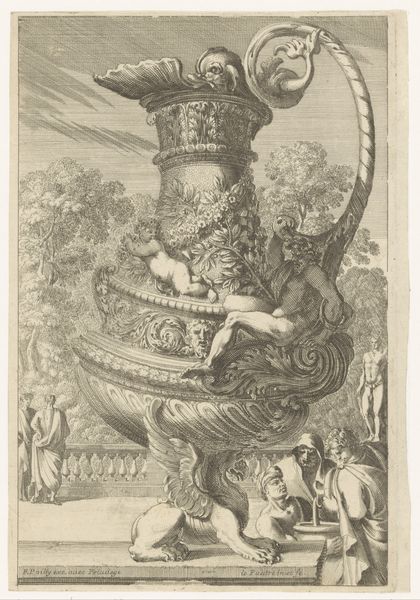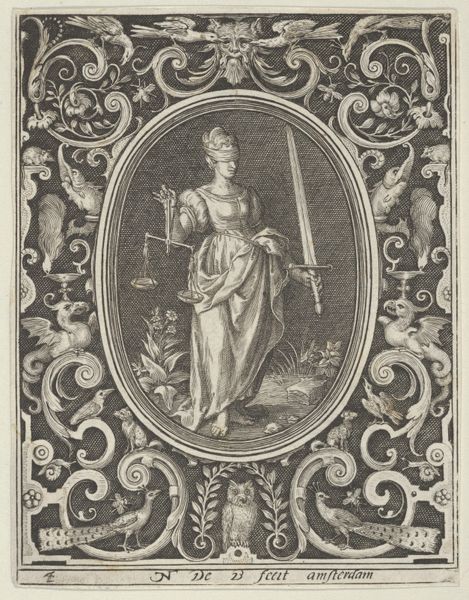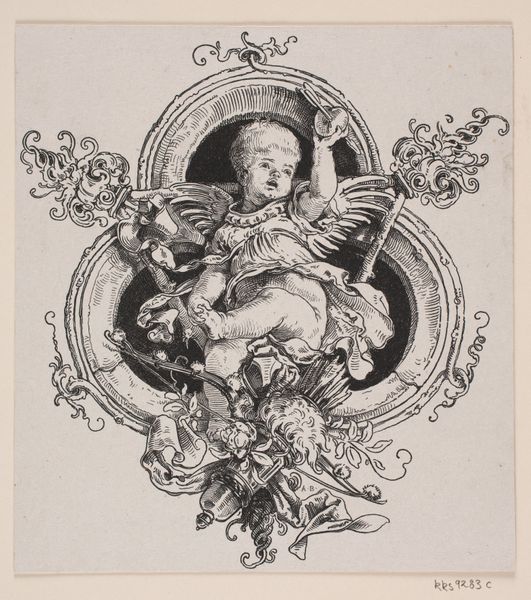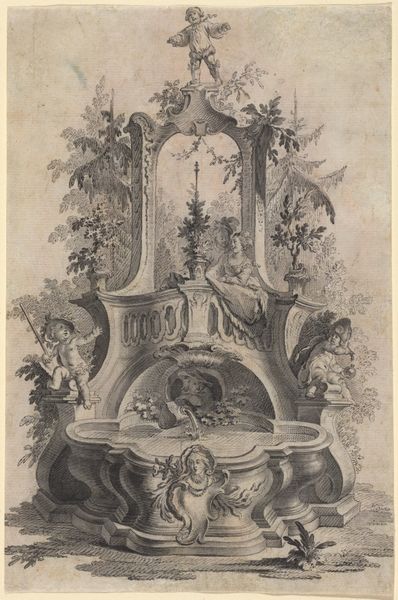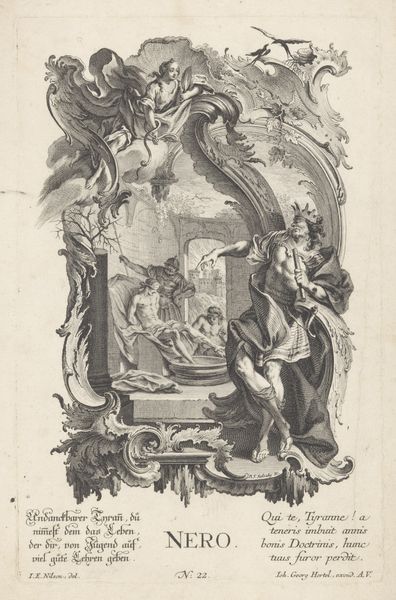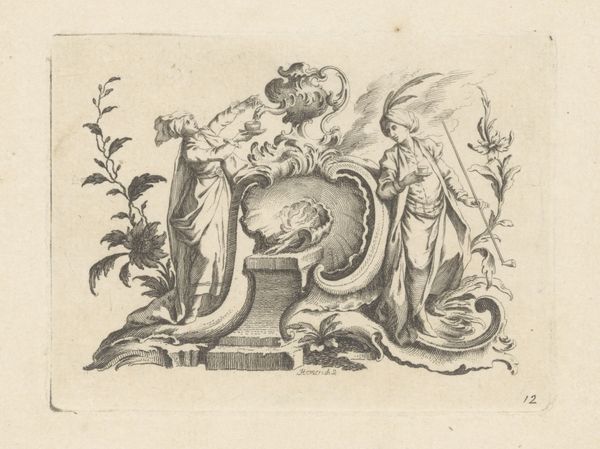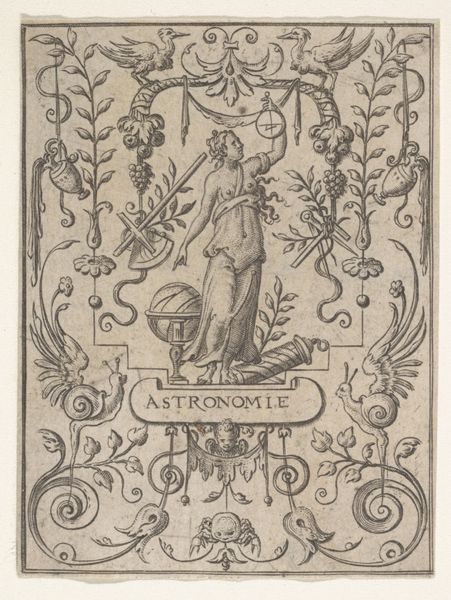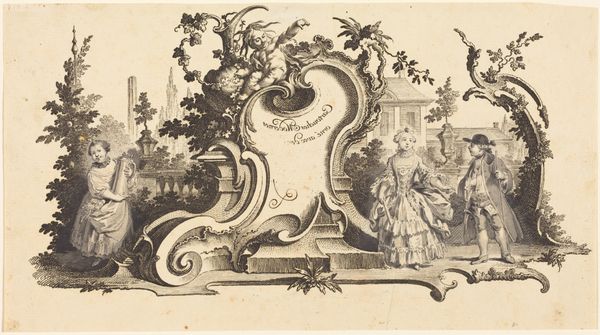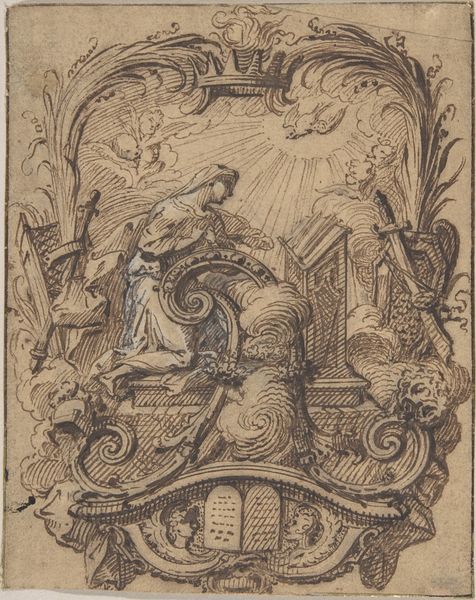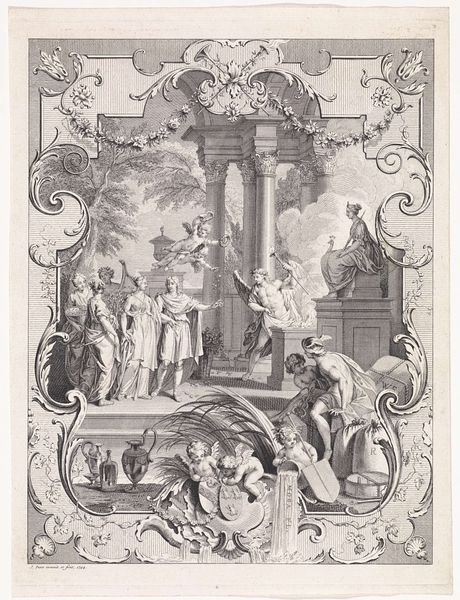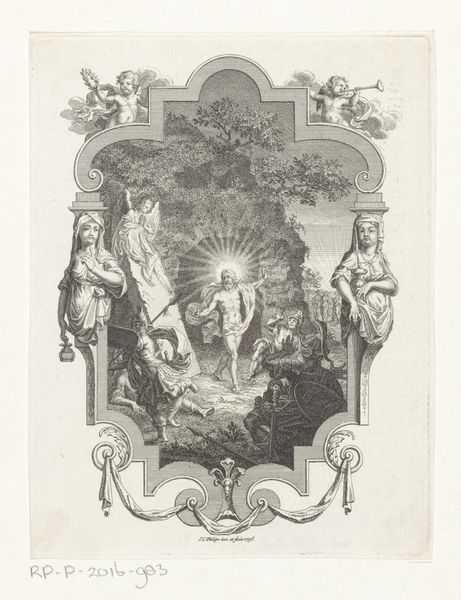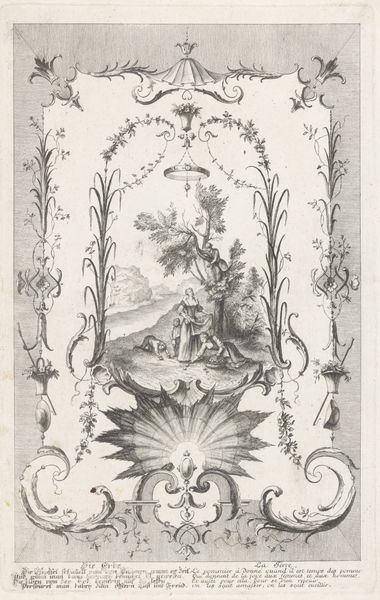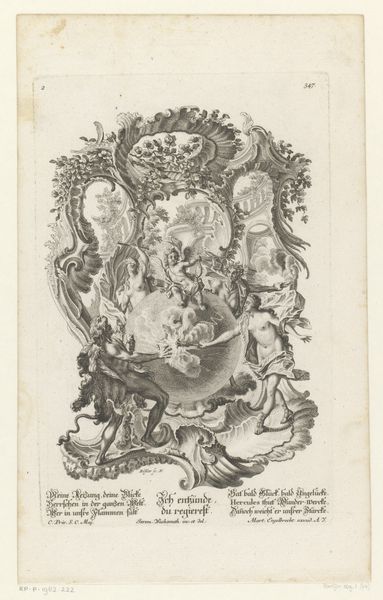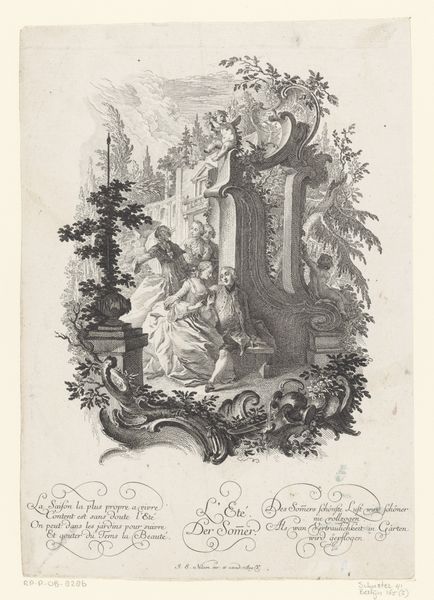
drawing, print, ink, pen
#
drawing
#
ink drawing
#
pen drawing
# print
#
figuration
#
ink
#
symbolism
#
pen
#
history-painting
Dimensions: 148 mm (height) x 185 mm (width) (bladmaal)
Curator: André Bork created this piece titled "Vignet til Schiller 'Die Glocke'" in 1879. It’s currently held here at the SMK. We believe it's an ink drawing or a print. What grabs you first about it? Editor: Well, the goddess-like figure looming over what appears to be a bell immediately sets a grand, almost operatic stage. The shading gives it a feeling of… well, not exactly serenity, but maybe controlled power? Curator: Controlled, that’s a great word for it. Considering its title – which refers to Schiller’s poem, "The Bell” – we can really unpack that. Bells, symbolically, bridge the earthly and the divine. That figure isn’t just decorative; she embodies the spirit of the bell itself. Notice how she wears quasi-Roman armor but has these very delicate wings. A synthesis, maybe? Editor: Absolutely! That contrast hits hard. The bell is also associated with major life events: births, deaths, wars, celebrations. What I’m sensing here is this potent visualization of those transitional moments we all inevitably face. The latin inscription also references life and death, a foreboding addition. Curator: Bork wasn't merely illustrating a poem. He was interpreting its themes through the established language of symbolism. Look at the tools beside the bell—hammers, tongs. They speak to labor, craft, even societal progress. Then you see the floral elements creeping in, weaving life and nature around it all. It's as if everything is connected in his drawing, mirroring life. Editor: Exactly! The bell is part of the angel's power—calling us to awareness, while the crafting elements call on everyday existence. The flowers, then, could suggest a form of solace, a visual meditation on cycles, from something beautiful out of hardship and creation. Curator: The empty cartouche at the base really invites the viewer in, doesn't it? It seems like Bork wants us to write our own chapter in the narrative. To think about our connection to those cycles. Editor: I completely agree, like some active participant—wondering about the deeper forces governing the passage of life and where they see themselves in this bell's toll. This definitely resonates well beyond just a vignette!
Comments
No comments
Be the first to comment and join the conversation on the ultimate creative platform.
